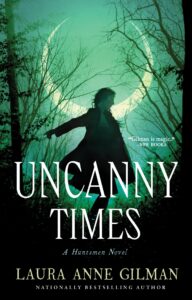Occasionally, when talking with young (or not-young-but-new) writers, they will ask, “what’s the most important thing you need to know to be successful as a writer?” They never like my answer:
You won’t know until you’ve used it.
But as a service to anyone who has ever wondered, I present to you my “Top Ten List of Things I Didn’t Know Were Going to Be Useful to Your Career”, until they were.
10. The ability to drink coffee (or beverage of your choice) and take notes at the same time.
Those days of chugging coffee from a thermos while trying to keep up with a lecture back in college paid off when doing primary source research – your expert might only have twenty minutes to talk with you, so you need to make them count, even if it’s at 6am. The ability to write with one hand and lift your mug with the other becomes a godsend.
9. Knowing the color of the underside of the Brooklyn Bridge.
All right, this one may be particular to me. Call it, “knowing stupid facts about landmarks.” When I was doing research on NYC landmarks for the Retriever series, I went poking around, armed with my camera, and discovered a surprising fact: the underside of the Brooklyn Bridge is (or was, it’s been a while since I checked) is… purple. Which became relevant in book #5. Useless information is never useless: you just don’t know where you’re going to need it (yet).
8. Knowing where the bathroom is.
Beyond the obvious usefulness to this, it’s a useful fact to know when you’re behind a signing table, watching potential readers pass you by. Placing a small sign on the table next to your books that says “yes, I do know where the bathrooms are,” sells books. Because the odds are high you’re going to be asked that anyway (at least once, probably more), and once you make someone laugh, you have them.
 7. Knowing how to talk to cops (without panic).
7. Knowing how to talk to cops (without panic).
A purely hypothetical example: you’re out scouting locations, camera in hand, when an officer of the law sees you, oh, poking your nose (and camera) around the base of, say, a major public landmark like, oh say, the Brooklyn Bridge. Post-9/11. Totally hypothetically, it is incredibly useful to know how to explain to that officer of the law that you’re a writer, this is for a project, here’s my business card, you can even call my editor/agent (please don’t call my editor or agent I will never live this down).
6. Being comfortable eating alone in public.
Like many of us, I wasn’t a big fan of eating alone in a restaurant. Even if I had a book to read, it often felt awkward, lonely, and slightly pathetic, as though I couldn’t find anyone to socialize with over dinner. But what I learned was that it is, hands down, the best possible place and time to eavesdrop, er, research how people behave and converse. You’re just sitting there, minding your meal, and story ideas literally come to you. Late night diners, expensive restaurants, cafes… it’s all a breeding ground for story fodder.
5. Owning fountain pens.
Never underestimate the enthusiasm another writer will show when you pull out a fountain pen (or seven). And how many people they will, in turn, introduce you to. It’s an immediate expansion of your professional network. The fact that using a fountain pen and nice paper can also often break you out of a plot-knot is just a bonus.
4. Having a good relationship with your PCP.
Having serious medical issues is never a plus – but it does create a relationship with your PCP, if you’re lucky, that allows you to call them up and say, “so, if someone was stabbed under the ribs…” You will also learn a lot (more than you wanted) about bodily fluids and infection sites.
3. Indulging in pointless arguments.
Getting that out of your system at an early (ish) age will be of immense use when feeling the urge to argue with reviewers (or trolls). Knowing when to walk away (ideally, before you even start) is a definite plus.
2. How to do home repairs.
Okay, maybe I’m the only one who ever destroyed a wall taking down story notes when the book was done. But home repair work is a good way to stretch non-chair-sitting muscles and make your chiropractor or massage therapist happier with you, and – considering the glacial payment rate of the publishing industry – better for your wallet.
1. Knowing how to take really good pet pictures.
The social media “pet tax” is real. A cute dog or cat (or hamster) photo will carry your social media message further than all the perfectly crafted words. Here, let me prove it to you:

